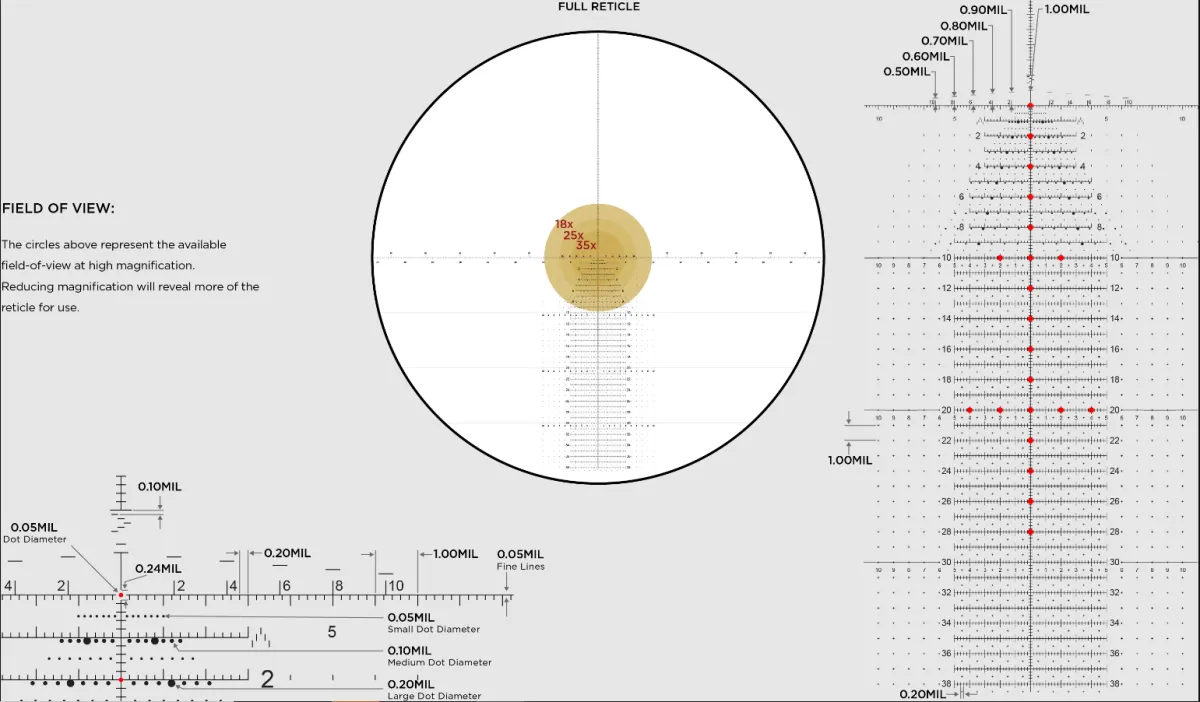
What Is An ACSS Reticle?
What is an ACSS Reticle?
For many gun owners, picking out parts to customize our guns can be extremely difficult, especially when it comes to optics. Most people will automatically know they want some type of optic, but which one should you buy? Is a green dot better than a red dot? Do you need a solar backup? What brand is most reliable? And a very interesting (and important) question being asked now, what is an ACSS reticle? All of these are valid questions, but for today, we're going to be focusing on the last one so that hopefully you can understand what ACSS reticles are, how they work, and if you need one for your setup.

The Origin of the ACSS Reticle
Super quick history lesson: the ACSS reticle was developed in 2008 by Dimitri Mikroulis, who works exclusively with Primary Arms based out of Houston, Texas (history lesson over!). The term "ACSS" is an acronym which stands for Advanced Combined Sighting System. Essentially the ACSS reticle was created so that the shooter could quickly and easily calculate things such as the range of the target, bullet drop, and wind.
How Does an ACSS Reticle Work?
There are currently a lot of scopes that offer advanced bullet drop compensation, windage, and other calculations, however there are a few problems with these scopes. Firstly these scopes can be extremely expensive. For example, lets take the Leupold Mark 6 3-18x44 M5C2 ILLUM. FFP TREMOR 3 which you can get your hands on right now for around $4,300, which is a lot of money for your average gun owner. This scope uses a MIL based system for the reticle, and for the sake of keeping this post simple, I won't be going into too much detail on what the MIL system is. To dumb it down, it is another way to make shooting calculations within the reticle, and is primarily used by the U.S. Military. Now this is a good system, and is actually very effective...if you know what you're doing. Which brings us to the our next issue: ease of use. Scopes that use systems like this take a lot of time and practice to fully understand how to use them effectively, and even once your reach that point, it can take some time to line up a proper shot. Lets take a look at the reticle system for the Leupold scope:

If you've never seen this before, then this probably looks like some advanced technical wizardry, but there is a system behind it. As mentioned before however, this does take some time to understand. This is the reason the ACSS reticle was created, it allows for quick, on-the-fly adjustment while shooting without having to do a lot of complex calculations. Let's take a look at one of the common ACSS reticles for comparison:

On top of that, good quality optics with ACSS reticles can be found from $200-$1000 on the high end. Take this Primary Arms LPVO for example. This is significantly more affordable for the average gun owner, which of course makes it more accessible. Now this does not mean the ACSS reticle is always the better option. Taking the time to learn a more advanced system will likely lead to better accuracy for precision shooting. However for the average person, having the maximum level of precision is not necessary, and being able to quickly and easily understand how your optic works is far more important.
What Optics have ACSS Reticles?
There are a countless amount of optics to choose from if you are looking for an optic with an ACSS reticle, for both pistols and rifles. As said before they are developed by Primary Arms, so that would be a good place to start if you are wanting to pick one up. Primary Arms also partnered with Holosun to create the brand new patent-pending ACSS Vulcan Reticle found on the new Holosun 507C, which can be found on sale here.

It's important to understand that there are many different types of ACSS reticles to choose from. The reticle that is best for you will depends on your use for that gun, as well as your comfort level with it. I would encourage everyone to do some research of your own on the different ACSS styles so you can determine which one would best suit your needs. At the end of the day there is not one size fits all solution, everyone will have their own preferences. The important thing is to get out there and shoot so you can find out what that preference is! Because if you don't train, then this whole post was a waste of time anyway. So no matter which optic or reticle you choose, get out there and make something happen!
Join our newsletter and get special offers sent to your inbox
Any Interests?
